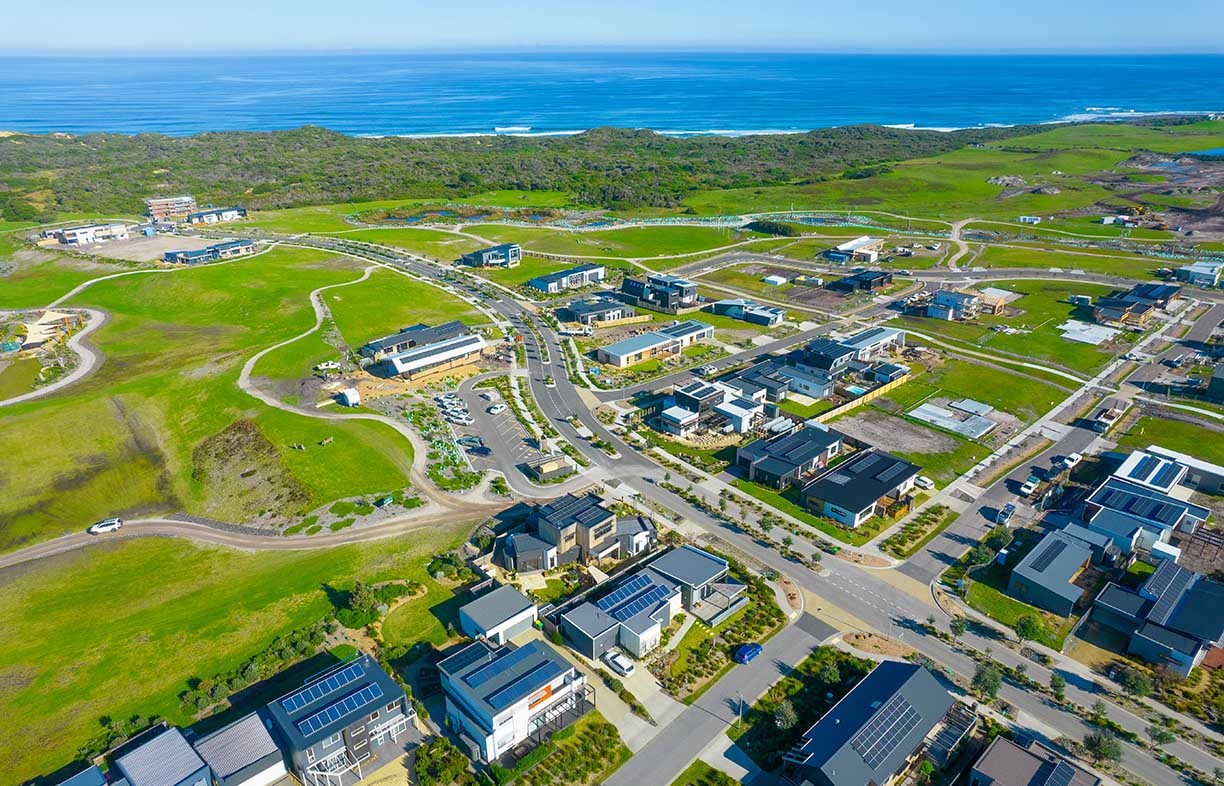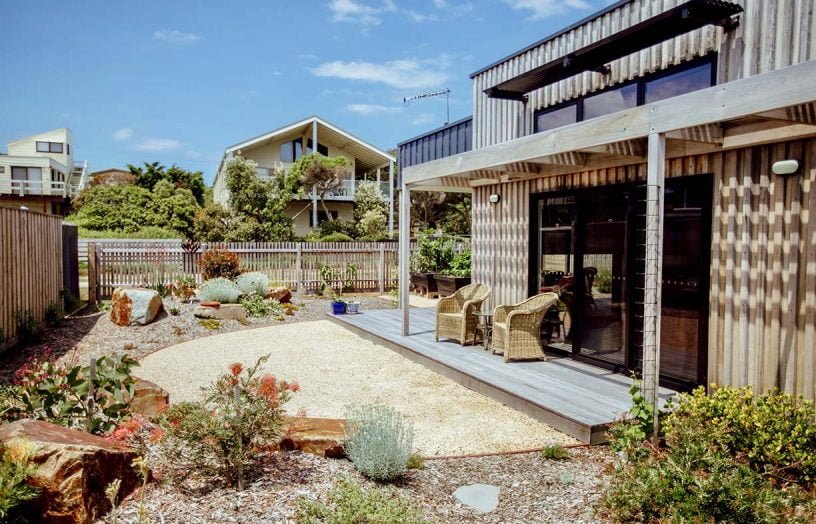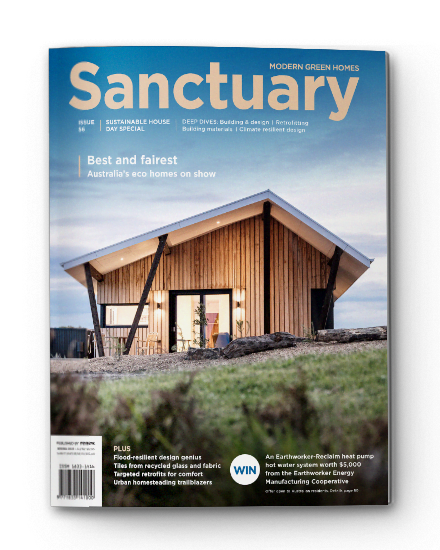Cape crusader

With the first residents well settled in and more high-performing homes under construction, one of Australia’s most ambitious housing developments is setting a precedent for community living.
While policymakers grapple with the idea of raising Australia’s mandatory minimum home energy rating above 6 Stars, there is one place where 8-Star houses are the norm and gas (and, increasingly, coal and petrol) is a thing of the past. 110 kilometres south-east of Melbourne, The Cape development has gone from dream to reality in the past decade, with nearly 65 finished homes on the ex-cattle farm and 190 home sites already sold.
Houses at The Cape must follow a set of design guidelines that encapsulate the vision for the development, including the provision that they be all-electric for energy. Homes must also achieve a minimum 7.5-Star home energy rating and have at least 2.5 kilowatts of solar PV and 10,000 litres of rainwater storage, to be as self-sufficient as possible. “The Cape is having a broad impact in our housing industry where we are busting misconceptions and normalising all-electric, energy-efficient homes,” says project director Brendan Condon.


Residents talk most about the beauty of the area and sense of community connection at The Cape. Over half the land is set aside as shared open space, and socially sustainable design guidelines recommend windows overlook public spaces, and verandahs and decks face the street to encourage interaction. Residents are growing food both at home and together, with work underway to complete the $2 million community farm after a successful pilot program using wicking bed technology. “We didn’t foresee how far home farming and food-abundant urban design would evolve here – it’s taking off in the community,” says Brendan.
The opportunity is there for all new developments to achieve comparable outcomes as the houses at The Cape, according to Brendan, with the cost of sustainable home systems such as double-glazed windows and solar panels reducing in recent years due to economies of scale. “These standards need to become the new normal across Australia if we are going to build carbon-neutral, resilient communities,” he says.
Also in this issue we look at two new homes at The Cape, both designed and built to the rigorous Passive House standard and exceeding the development’s minimum Star rating: for more, read Strait views and Basking in sunlight.
Further reading
 House profiles
House profiles
An alternative vision
This new house in Perth’s inner suburbs puts forward a fresh model of integrated sustainable living for a young family.
Read more House profiles
House profiles
Quiet achiever
Thick hempcrete walls contribute to the peace and warmth inside this lovely central Victorian home.
Read more


